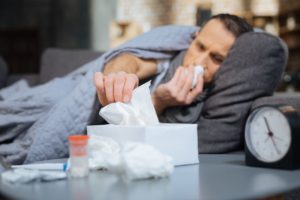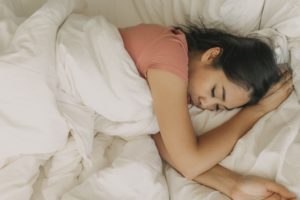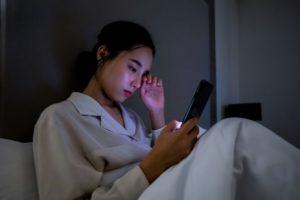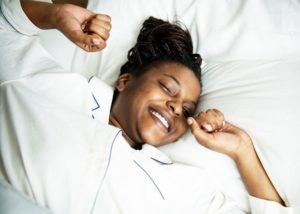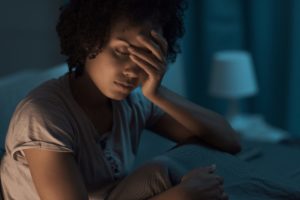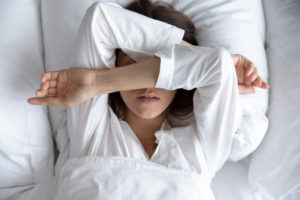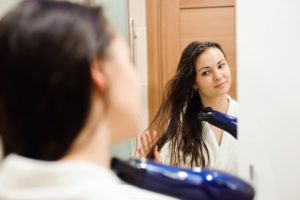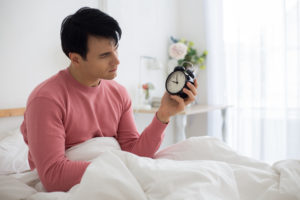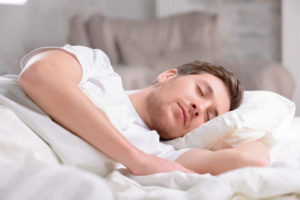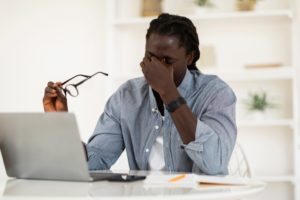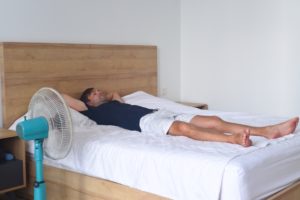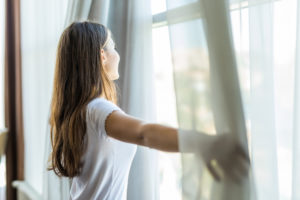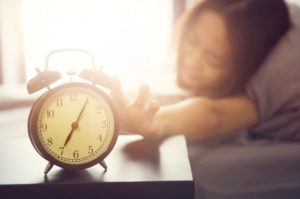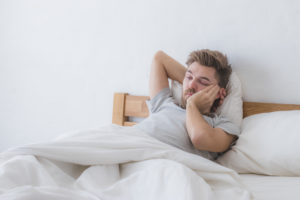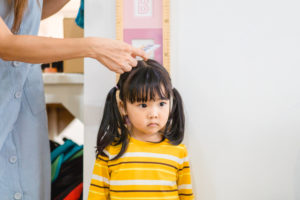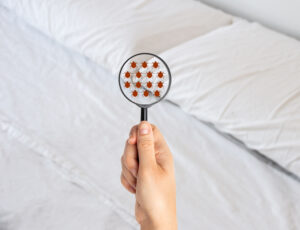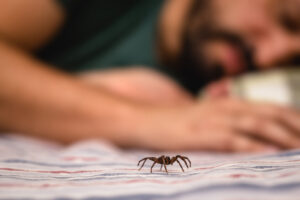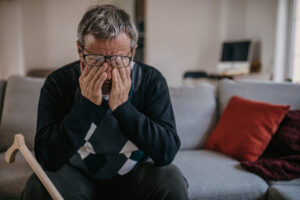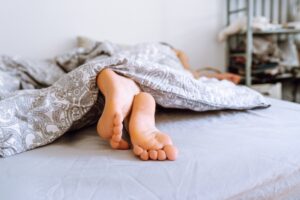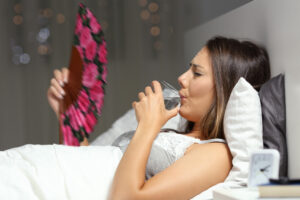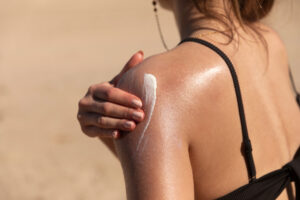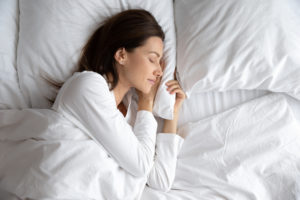When you buy through our links, we may earn a commission. Products or services may be offered by an affiliated entity. Learn more.
Can You Sneeze in Your Sleep?
Research about sneezing during sleep is limited and provides few definitive answers. Nevertheless, it is generally believed that a person cannot sneeze during REM sleep because many of the body’s muscles are temporarily paralyzed during that stage of sleep.
In other sleep stages, sneezing may require at least partial awakening, but there is not enough evidence to rule out the possibility that sneezing can occur during lighter stages of sleep.
Regardless of whether it requires waking up, sneezing during the night can be bothersome. Learning the background about sneezing and why it happens can help explain why it does not occur during REM sleep and provide insight into strategies to prevent sneezing at night.
Struggling to Stay Awake? Take an At-Home Sleep Test

our partner at sleepdoctor.com
LAST CHANCE: 20% off Home Sleep Tests
Buy Now“Truly grateful for this home sleep test. Fair pricing and improved my sleep!”
Dawn G. – Verified Tester
How Does Sneezing Work?
A sneeze is an uncontrolled, often sudden release of air from the nose and mouth. Sneezing, also called sternutation, is an unconscious reflex seen in humans and many animals . The purpose of sneezing is to expel irritants from the nose.
The inside of the nasal cavity is lined with a mucous membrane called the nasal mucosa . The mucus-creating cells in this membrane have tiny hair-like components called cilia.
Both mucus and cilia help to remove contaminated particles before they can reach the lungs. The mucus traps irritants as they are inhaled. The cilia then push the trapped particles forward where they can be more easily cleared from the nasal cavity.
Within the mucous membrane are nasal sensory neurons that deliver information to the brain. When triggered by an irritant, these neurons send a message to the “sneeze center” in the brain, which then signals the body to initiate the sneeze reflex. Muscles in the face, chest, and abdomen all work together to produce a sneeze.
In removing irritants from the nose, sneezing can spread germs , including bacteria and viruses that cause infectious diseases. To prevent the spread of germs, the mouth and nose should be covered by a tissue or elbow during a sneeze. Hand-washing for at least 20 seconds is recommended after sneezing.
What Causes Sneezing?
There are a number of things that can trigger a sneeze. Some causes may be related to allergies or germs that enter the nose. Other things may also cause sneezing even though experts do not know exactly why.
Overall, there is a diverse list of potential causes of sneezing.
- Environmental irritants: Air pollution and breathing in powders or perfumes have the potential to cause sneezing. Exposure to spicy foods, such as the compound capsaicin found in chili peppers, can also lead to a sneeze.
- Inhalation of allergens: Indoor allergens can trigger sneezing. Pet dander and exposure to dust mites, cockroaches, rodents, and fungi may provoke sneezes . Seasonal allergens, such as from outdoor mold or pollen from grass and trees, can also induce sneezing.
- Illnesses: Sneezing is a typical symptom of viral infections such as the common cold and the flu .
- Histamine: Histamine is a chemical that helps send signals in the body. Normally, histamine protects the body from invaders like parasites. But sometimes histamine can respond to substances that are not actually dangerous, including many allergens. In these cases, histamine is part of the process of sneezing .
- Exposure to heat or cold: If the skin is exposed to extreme temperatures, the sneezing reflex may be triggered.
- Exposure to bright light: Sneezing can occur in response to bright light. About 25% of people will sneeze when exposed to sunlight if they already have a tickle in their nose. Some people even have a genetic disposition to sneeze uncontrollably when they see intense bright light.
- Strong emotions: Certain people may start to sneeze when they have powerful emotional reactions.
- Sexual activity: Some people report sneezing when thinking about sex or having an orgasm. However, the prevalence of this phenomenon and what causes it are not known.
- Eating: Some medical reports have identified people who sneeze in response to having a full stomach.
How Do Sleep Stages and REM Sleep Affect Sneezing?
During sleep, the body cycles through two types of sleep : non-rapid eye movement (NREM) sleep and rapid eye movement (REM) sleep.
NREM sleep consists of three stages that progress to deeper sleep in each sleep cycle.
- Stage 1: Stage 1 is the transition phase between wakefulness and sleep. This stage of very light sleep typically lasts less than seven minutes.
- Stage 2: During stage 2 sleep the muscles relax, and body functions such as breathing and heart rate get slower. This stage lasts up to 25 minutes when it occurs early in the night and gets progressively longer with each sleep cycle.
- Stage 3: Stage 3 involves restorative, deep sleep during which it is difficult to be awakened. Stage 3 sleep often lasts between 20 and 40 minutes each sleep cycle.
It remains unclear if sneezing can occur during NREM sleep. During very light sleep, it may be possible that a person could sneeze without waking up. But it is also possible that sneezing requires a very brief or partial awakening. No evidence has been published to definitively confirm either possibility.
REM sleep is quite different from NREM sleep. REM sleep usually begins after NREM stages, starting about 90 minutes after sleep onset. REM sleep is characterized by quick movement of the eyes that is noticeable even though the eyelids are closed. Brain activity, heart rate, and blood pressure ramp back up during REM sleep, and most dreaming is thought to occur during this stage.
During REM sleep, many muscles in the body are temporarily paralyzed. This is known as atonia , and it is thought to be initiated by specific signaling in the brain. This paralysis is believed to make it unlikely or impossible that a person can sneeze during REM sleep.
Tips to Prevent Sneezing During the Night
If you are concerned about sneezing at night, there are several steps you can take to reduce or eliminate potential sneezing triggers.
- Clean bedding frequently: To remove potential irritants, allergens, or dust mites, wash the bedding regularly. A hot water temperature of 130°F is recommended.
- Use quality bedding: If allergies trigger sneezing, consider choosing bedding made with fabrics that are impermeable to allergens .
- Eradicate dust particles: Air filters can reduce allergens in the air at home. Some vacuums have high-efficiency particulate air (HEPA) filters that can also reduce sneezing and other allergy symptoms.
- Keep pets out of the bedroom: Many people are allergic to pet dander. Keeping pets in limited areas of the home may help reduce dander in the bedroom.
- Talk to your doctor: If regularly sneezing at night is a problem, talk to a doctor about your symptoms. A doctor may prescribe antihistamines, nasal sprays, or other medications to help relieve your sneezing.

Still have questions? Ask our community!
Join our Sleep Care Community — a trusted hub of sleep health professionals, product specialists, and people just like you. Whether you need expert sleep advice for your insomnia or you’re searching for the perfect mattress, we’ve got you covered. Get personalized guidance from the experts who know sleep best.
References
20 Sources
-
Gore, G., & Verma, A. (2017). Sneezing: Physiological facts and beliefs. The Journal of the Association of Physicians of India, 65(9), 106.
https://pubmed.ncbi.nlm.nih.gov/29313590/ -
BBC News. (2018, January 16). Sneezing myths and facts. Retrieved August 28, 2022, from
https://www.bbc.com/news/health-42701590 -
A.D.A.M. Medical Encyclopedia. (2020, May 2). Sneezing. MedlinePlus. Retrieved August 22, 2022 from
https://medlineplus.gov/ency/article/003060.htm -
Songu, M., & Cingi, C. (2009). Sneeze reflex: Facts and fiction. Therapeutic Advances in Respiratory Disease, 3(3), 131–141.
https://pubmed.ncbi.nlm.nih.gov/19617285/ -
Kaylie, D. M. (2022, April). Nose and sinuses. Merck Manual Consumer Version. Retrieved August 22, 2022 from
https://www.merckmanuals.com/home/ear,-nose,-and-throat-disorders/biology-of-the-ears-nose-and-throat/nose-and-sinuses -
A.D.A.M. Medical Encyclopedia. (2021, August 31). Nasal mucosa. MedlinePlus. Retrieved August 22, 2022 from
https://medlineplus.gov/ency/imagepages/9674.htm -
Sobiesk, J. L. & Munakomi, S. (2021, July 26). Anatomy, head and neck, nasal cavity. In StatPearls. StatPearls Publishing. Retrieved August 22, 2022 from
https://www.ncbi.nlm.nih.gov/books/NBK544232/ -
Li, F., Jiang, H., Shen, X., Yang, W., Guo, C., Wang, Z., Xiao, M., Cui, L., Luo, W., Kim, B. S., Chen, Z., Huang, A. J., & Liu, Q. (2021). Sneezing reflex is mediated by a peptidergic pathway from nose to brainstem. Cell, 184(14), 3762–3773.e10.
https://pubmed.ncbi.nlm.nih.gov/34133943/ -
National Institute of Neurological Disorders and Stroke. (2022, July 25). Brain basics: The life and death of a neuron. Retrieved August 22, 2022 from
https://www.ninds.nih.gov/health-information/patient-caregiver-education/brain-basics-life-and-death-neuron -
MedlinePlus: National Library of Medicine (US). (2020, September 23). Germs and hygiene. Retrieved August 22, 2022 from
https://medlineplus.gov/germsandhygiene.html -
Peden, D. (2022, April 25). An overview of rhinitis. In J. Corren (Ed.). UpToDate. Retrieved August 22, 2022 from
https://www.uptodate.com/contents/an-overview-of-rhinitis -
Tesini, B. L. (2022, April). Common cold. Merck Manual Consumer Version. Retrieved August 22, 2022 from
https://www.merckmanuals.com/home/infections/respiratory-viruses/common-cold -
A.D.A.M. Medical Encyclopedia. (2020, August 13). Flu. MedlinePlus. Retrieved August 22, 2022 from
https://medlineplus.gov/ency/article/000080.htm -
MedlinePlus: National Library of Medicine (US). (2017, September 8). Histamine: The stuff allergies are made of. Retrieved August 22, 2022 from
https://medlineplus.gov/medlineplus-videos/histamine-the-stuff-allergies-are-made-of/ -
Drake, M. G. (2022, May 4). Neuronal control of the airways. In P. J. Barnes (Ed.). UpToDate. Retrieved August 22, 2022 from
https://www.uptodate.com/contents/neuronal-control-of-the-airways -
Dean, L. (2015, July 27). ACHOO syndrome. In Medical Genetics Summaries. National Center for Biotechnology Information. Retrieved August 22, 2022 from
https://www.ncbi.nlm.nih.gov/books/NBK109193/ -
National Institute of Neurological Disorders and Stroke. (2022, September 26). Brain basics: Understanding sleep.
https://www.ninds.nih.gov/health-information/public-education/brain-basics/brain-basics-understanding-sleep -
Brinkman, J. E., Reddy, V., & Sharma, S. (2021, September 24). Physiology of sleep. In StatPearls. StatPearls Publishing.
https://www.ncbi.nlm.nih.gov/books/NBK482512/ -
Arrigoni, E., Chen, M. C., & Fuller, P. M. (2016). The anatomical, cellular and synaptic basis of motor atonia during rapid eye movement sleep. The Journal of Physiology, 594(19), 5391–5414.
https://pubmed.ncbi.nlm.nih.gov/27060683/ -
Akhouri, S. & House, S. A. (2022, June 5). Allergic rhinitis. In StatPearls. StatPearls Publishing. Retrieved August 22, 2022 from
https://www.ncbi.nlm.nih.gov/books/NBK538186/





